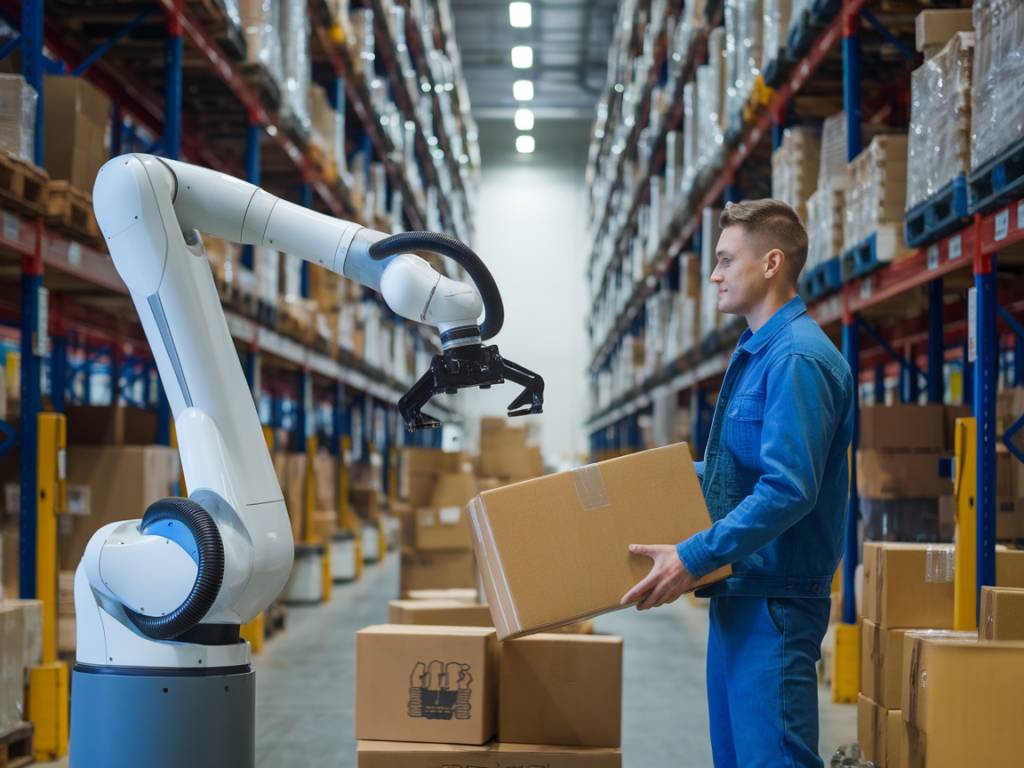« `html
Collaborative Robotics in Logistics: How Humans and Machines Work Together for Efficiency
In recent years, the logistics industry has undergone a significant transformation with the integration of collaborative robotics. These advanced machines, known as cobots, are designed to work alongside human employees, improving efficiency, accuracy, and safety in warehouses, distribution centers, and transportation hubs. As automation continues to reshape supply chains, understanding the role of collaborative robots in logistics becomes essential for businesses aiming to stay competitive.
What Are Collaborative Robots?
Collaborative robots, or cobots, are a type of automation technology specifically designed to work in close proximity with human workers. Unlike traditional industrial robots, which often require designated safety zones, cobots are equipped with sensors and AI-driven systems that allow them to detect human presence and adapt their actions accordingly.
These robots excel in performing repetitive, strenuous, or high-precision tasks while allowing human workers to focus on more complex and strategic activities. Their flexibility, ease of integration, and cost-effectiveness make them a valuable addition to modern logistics operations.
The Role of Collaborative Robotics in Logistics
Logistics operations involve numerous tasks that can benefit from automation. Cobots enhance efficiency in various key areas:
- Order Picking and Packing: Cobots assist human workers by automating the retrieval and packing of products, thereby reducing errors and increasing order fulfillment speed.
- Sorting and Routing: Collaborative robots streamline sorting and routing processes in warehouses and distribution centers, optimizing product flow.
- Loading and Unloading Goods: Cobots are used in warehouses and ports to assist with loading and unloading shipments, minimizing manual labor fatigue.
- Inventory Management: Equipped with AI-powered vision systems, cobots accurately track and manage inventory, reducing stock discrepancies.
- Last-Mile Delivery Assistance: In some cases, autonomous robotic assistants are used in last-mile delivery to support logistics companies with reduced operational costs.
Benefits of Using Collaborative Robots in Logistics
The adoption of collaborative robots in logistics offers numerous advantages for businesses looking to optimize their supply chain processes. Some of the main benefits include:
- Increased Efficiency: Cobots handle repetitive tasks with speed and precision, accelerating workflows and reducing bottlenecks.
- Enhanced Safety: Equipped with advanced sensors, cobots can detect obstacles and prevent collisions, reducing workplace hazards.
- Cost Savings: By optimizing workforce productivity and minimizing errors, cobots contribute to long-term cost reductions.
- Scalability and Flexibility: Logistics companies can quickly reprogram and redeploy cobots to adapt to changing operational demands.
- Improved Worker Satisfaction: Reducing manual strain and allowing workers to focus on strategic activities leads to better job satisfaction and retention rates.
Challenges in Implementing Collaborative Robots
Despite the numerous advantages, integrating cobots into logistics operations is not without its challenges. Some of the key obstacles include:
- High Initial Investment: While cobots offer long-term savings, the upfront costs for acquiring and integrating them can be substantial.
- Workforce Adaptation: Employees may require training to effectively collaborate with robotic systems, necessitating proper education and upskilling programs.
- System Integration: Ensuring that cobots seamlessly integrate into existing logistics systems and software platforms can be complex.
- Regulatory Compliance: Logistics operations involving collaborative robotics must comply with industry regulations concerning worker safety and operational guidelines.
Future Trends in Collaborative Robotics for Logistics
The future of collaborative robotics in logistics is promising, with continuous advancements in artificial intelligence, machine learning, and sensor technology. Some emerging trends include:
- Increased Use of AI: AI-powered cobots are becoming smarter, enabling them to make real-time decisions and adapt to dynamic warehouse environments.
- Integration with IoT: The Internet of Things (IoT) is improving communication between cobots and warehouse management systems, leading to enhanced automation and efficiency.
- Autonomous Mobile Robots (AMRs): Unlike fixed cobots, AMRs are gaining traction in warehouses for their ability to navigate spaces independently and optimize material handling.
- Greater Human-Robot Collaboration: Future cobots will feature even more intuitive interfaces, allowing seamless collaboration with human workers.
- Sustainable Robotics Solutions: Companies are exploring energy-efficient robotic systems to align with green logistics and environmental sustainability goals.
Final Thoughts
As logistics operations continue to evolve, collaborative robotics play an indispensable role in enhancing efficiency, accuracy, and worker safety. By seamlessly integrating cobots into supply chain processes, businesses can achieve higher productivity levels while maintaining cost-effectiveness. While challenges such as high initial investments and workforce adaptation exist, ongoing technological advancements are making collaborative robotics more accessible and practical for a wide range of applications.
Companies looking to stay competitive in the modern supply chain landscape should consider investing in collaborative robotics. By harnessing the power of human-machine collaboration, logistics providers can transform their operations, streamline workflows, and adapt to the ever-evolving demands of global commerce.
« `

